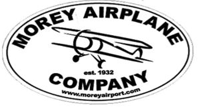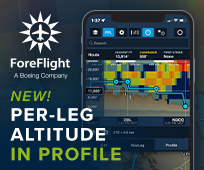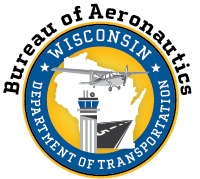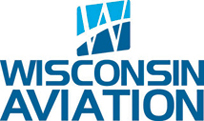Minnesota DOT Office of Aeronautics Auction
Erin Miller To Receive 2021 Bruce Whitman Trophy
Published in Midwest Flyer Magazine August/September 2021 online issue
Washington, DC – The National Aeronautic Association (NAA) has announced that Erin Miller, author of “Final Flight Final Fight: My Grandmother, the WASP,” and “Arlington National Cemetery,” has been selected as the recipient of the 2021 Bruce Whitman Trophy.
The Bruce Whitman Trophy was established by the Board of Directors of NAA in 2019 to honor the late aerospace executive and philanthropist. Whitman was posthumously named the first recipient of the trophy the same year.
The trophy is awarded to “… outstanding individuals who have made significant contributions to aviation or aerospace in the United States, and who by working with museums and other institutions, have promoted an appreciation by students and the broader public of the sacrifices and legacy of members of the military service.” A deserving nominee is put forth annually by the chairman of the NAA.
Erin Miller is the proud granddaughter of Elaine Danforth Harmon, a member of the Women Airforce Service Pilots (WASP) during World War II. Despite being part of the first group of women to fly for the United States Army, WASP remained officially unrecognized as members of the military. Her grandmother’s last request was to be laid to rest at Arlington National Cemetery (ANC) and after she died in April 2015, this request was denied by the U.S. Army. This injustice led Miller to launch a successful grassroots, social media, and direct lobbying campaign to fight the decision. Thanks to Millers efforts, WASP members can now be buried at ANC.
AOPA & The AOPA Air Safety Institute Honored With Excel Awards
Published in Midwest Flyer Magazine August/September 2021 online issue
FREDERICK, MD – The Aircraft Owners & Pilots Association (AOPA), and the AOPA Air Safety Institute, were recognized June 16 for their news and educational media during the virtual 41st Annual AM&P Network Association Council Excel Awards hosted by Association Media and Publishing.
The awards “are the largest and most prestigious program recognizing excellence and leadership in association media, publishing, marketing and communication,” among nonprofit and for-profit associations, according to Association Media and Publishing’s parent organization, the Software & Information Industry Association. The association recognized 240 finalists across 82 categories in the peer-reviewed awards program.
“AOPA employs the largest group of media professionals covering general aviation,” said Tom Haines, AOPA editor in chief and senior vice president of media, communications, and outreach. “Combining that talent with our aviation expertise allows us to create compelling content across all of our channels. We receive great feedback from members routinely, but it’s also rewarding to receive recognition from our publishing peers in the association world.”
AOPA Live® earned a Gold Excel Award for its Arsenal of Democracy 2020 video that showcased the last two Boeing B-29 Superfortresses still flying, joining up with other warbirds for an aerial parade in remembrance of the 75th anniversary of the end of World War II. About 60 warbirds had gathered in northern Virginia in September 2020 to fly over Washington, D.C., but weather scrubbed the mission. Still, AOPA covered the show of force from every angle and brought it to members as a tribute. The video also features U-Haul CEO Joe Shoen’s Consolidated PB4Y-2 Privateer, the last of its kind still flying; the Military Aviation Museum’s Consolidated PBY Catalina; and the moment when a true “Rosie the Riveter” reunited with one of the bombers she helped rivet.
AOPA Senior Photographer Chris Rose’s photo featured on the cover of the April 2020 issue of AOPA Pilot, featuring a sunrise-lit seaplane in a remote area of Quebec Province, won a Bronze Excel Award for best cover photography.
AOPA’s “Coronavirus impact on GA” microsite earned a Bronze Award in the new pandemic response microsite category. The microsite enabled pilots, flight schools, and the media to learn about the effects of the pandemic on GA, what the aviation community was doing to help manufacture and transport personal protective equipment and vaccines, and how AOPA advocated on Capitol Hill to keep aviators flying safely during the pandemic.
The AOPA Air Safety Institute swept the educational video category, earning a Gold Award for “Accident Case Study: Lake Renegade,” which examines a fatal accident that occurred in 2017 at the seaplane base on Lake Winnebago in Oshkosh, Wisconsin, when a pilot attempted to take off in high waves; a Silver Award for “Real Pilot Story: Pressure Over the Atlantic,” which details how a ferry pilot flying solo over the North Atlantic, discovered a serious issue with his auxiliary fuel tank and found a solution and survived; and a Bronze Award for “Reality Check: What are the Costliest Insurance Claims?”, which looks at the types of claims that can drive up aviation insurance rates, and provides tips on how pilots can be part of the solution to reducing the cost of insurance.
In addition, the institute’s digital “CFI to CFI” newsletter won a Silver Award for general excellence in the newsletters category. The quarterly publication is free to more than 57,000 subscribers and promotes relevant safety education materials for flight instructors and their students. Alyssa J. Cobb, AOPA
Watertown’s EAA Chapter 320 Awarded $10,000 Scholarship
Published in Midwest Flyer Magazine August/September 2021 online issue
WATERTOWN, WIS. – EAA Chapter 320 of Watertown, Wisconsin, has met the stringent requirements to qualify for and receive a James C. Ray Foundation Scholarship administered through the Experimental Aircraft Association (EAA) in Oshkosh, Wis. The scholarship covers up to $10,000 to help offset the cost of flight training for one youth working to obtain their Private Pilot Certificate.
“There are only 100 scholarships awarded nationwide to chapters which qualify, and the vetting process is quite rigorous,” said Chapter President Eric Wegner. “Our Chapter 320 has worked very hard to distinguish itself as a ‘Gold Level’ chapter and meet the criteria to participate in this program. Receiving this scholarship says a lot about the quality of the Watertown chapter.”
Receiving the scholarship is Chapter 320 member, Micah West, 17. Micah intends to continue his flight training with the goal of flying for a major airline. He is receiving his flight training from Charles Allen, an instructor with Wisconsin Aviation in Watertown.
Carrie Nettesheim is the EAA Chapter 320 Scholarship Coordinator who helps chapter members of all ages obtain funding for flight training.
“We’re thrilled for our chapter and for Micah,” said Nettesheim. “It is rewarding to help people pursue their dream of being able to fly!”
EAA Chapter 320 Watertown is a non-profit organization established in 1968 and has approximately 60 members. Chapter members meet the first Monday each month at Watertown Municipal Airport in Watertown, Wis. (chapters.eaa.org/EAA320). For additional information, contact EAA Chapter 320 President Eric Wegner at 612-799-5717 (cell) or email President.EAA320@gmail.com.
Watertown’s EAA Chapter 320 Members Receive National Awards
Published in Midwest Flyer Magazine August/September 2021 online issue
WATERTOWN, WIS. – Two members from EAA Chapter 320 in Watertown, Wisconsin, were contacted by the Experimental Aircraft Association (EAA) in late June 2021 to inform them that they have been chosen as 2021 National Chapter Award winners! Honors go to Bill Rantanen for the “EAA Chapter Web Editor Award” and Rich Fraser for the “EAA Chapter Newsletter Editor Award.” The award recipients will be honored at the 2021 EAA AirVenture Oshkosh Chapter Leaders Breakfast on Saturday, July 31, at the EAA Aviation Museum in Oshkosh, Wisconsin.
Rantanen and Fraser were selected for the recognition out of hundreds of entrants by the EAA Chapter Relations staff at EAA headquarters in Oshkosh.
“Bill and Rich have done an outstanding job serving our chapter in different roles and capacities for years. It is great to see them get the recognition they deserve at a national level,” said EAA Chapter 320 President Eric Wegner. “Their professionalism and dedication to our members reflects the quality of individuals we have in our organization and has been key to our growth and vibrancy.”
EAA Chapter 320 Watertown is a non-profit organization established in 1968 and currently has approximately 60 members. Chapter members meet the first Monday each month at Watertown Municipal Airport, located at 1741 River Drive, Watertown, Wisconsin. The public is encouraged to follow the chapter on Facebook and on their website: https://chapters.eaa.org/EAA320
For more information about EAA Chapter 320, contact Eric Wegner at 612-799-5717, or via email: President.EAA320@gmail.com.
Anyone Giving or Receiving Instruction In A Limited, Primary or Experimental Category Aircraft, Is At Risk of Violating New FAA Directive
Published in Midwest Flyer Magazine August/September 2021 online issue
The FAA issued a new directive effective July 12, 2021 that “provides notification on flight training for compensation in certain aircraft,” specifying it applies to receiving and providing instruction in limited, primary, and experimental category aircraft. Meanwhile, in court proceedings, the FAA is prosecuting flight instructors who volunteered their time instructing in limited category aircraft and didn’t receive a penny for doing so, arguing the volunteers had received compensation.
FREDERICK, MD – The FAA argued in court that flight instructors who volunteered their time training pilots in limited category aircraft were given “compensation” whether money changed hands or not. The recent FAA directive requiring approval to provide compensated instruction also applies to experimental and primary category aircraft.
“The FAA can’t have it both ways, while claiming it is clarifying the situation. This is contrary to the FAA’s mission and obligation to promote safe flight,” said AOPA President Mark Baker.
On July 12, 2021, FAA prosecutors quoted FAA Advisory Circular 61-142, “defining ‘compensation’ as the receipt of anything of value that is contingent on the pilot operating the aircraft… [it] does not require a profit, profit motive, or actual payment of funds. … accumulation of flight time and goodwill in the form of expected future economic benefits can be considered compensation. Furthermore, the pilot does not have to be the party receiving the compensation; compensation occurs even if a third party receives a benefit as a result of the flight.”
The FAA alleged volunteer instructors received compensation by “accumulating flight time” and “generating goodwill.” In other words, the FAA believes giving away your time and talent equates to compensation.
While pilots and flight instructors receiving and giving instruction in standard category aircraft are not affected by this recent move, it is a roadblock for those seeking instruction in these three specific categories of aircraft, potentially causing some to forego proper training and therefore impacting safety. Until July 12, the FAA never required students who provided experimental aircraft to have a Letter of Deviation Authority (LODA) to receive flight training and flight reviews.
Now the FAA “clarified” that owners and operators of more than 39,000 experimental aircraft, as well as the CFIs who provide instruction in them, need LODAs in place to receive or give “compensated” instruction in those aircraft. But in reality, it doesn’t appear to matter if no money is exchanged for instruction in limited, experimental, or primary aircraft; the FAA can and is arguing that anything is considered “compensation” solely because the FAA labels it so, and that it can prosecute a flight instructor for someone else receiving “compensation,” even if the instructor receives none. The overreach and refusal to draw limits is breathtaking.
So, what does this mean for pilots who want to receive a flight review or transition training, or just brush up on techniques with an instructor in their limited, primary, or experimental category aircraft? And what does this mean to the instructors who want to teach them?
To stay out of the FAA’s legal crosshairs until the courts decide whether the FAA’s legal arguments are winning ones, you’ll need to get the FAA’s permission first. For training in experimental aircraft, that means obtaining a LODA, as outlined in the July 12 directive. For limited and primary category aircraft, that means obtaining an exemption.
Flight instruction is a noble profession, one that requires significant investment in terms of time, money, and effort. Flight instructors deserve to earn a living without needless bureaucracy. Pilots, particularly those who fly unusual aircraft with unique flight characteristics, need access to training without meaningless “approval” processes that have no impact on safety, beyond degrading it by delaying training and adding barriers to access.
Can there be flight training that doesn’t result in hours of experience for the instructor or student? Why did the FAA issue a policy that targets flight training “for compensation” if it also argues there is no situation that doesn’t fit its “kitchen sink” definition of compensation? It sure would be nice if it could “clarify” that.
AOPA will continue to probe the FAA for answers to these questions while also working through whatever means necessary to remove these impractical barriers to training.
If you’re a member of AOPA’s Pilot Protection Services plan and have questions about the approvals needed to give or receive training in a particular aircraft, the AOPA Pilot Protection Services legal team is standing by to assist you. The AOPA Pilot Protection Services can be reached at 800-872-2672. Justine A. Harrison, AOPA
Minnesota Seaplane Pilots Association To Hold Annual Safety Seminar & Fly-In At Madden’s
Published in Midwest Flyer Magazine August/September 2021 online issue
BRAINERD, MINN. – The Minnesota Seaplane Pilots Association (MSPA) will hold its 2021 Safety Seminar, September 17-19, at Madden’s on Gull Lake near Brainerd, Minnesota (https://www.maddens.com/). Wipaire will be sponsoring the second annual Poker Run on Friday, September 17. The keynote banquet speaker on Saturday, September 18, will feature ferry pilot, Kerry McCauley, who will be sharing his experiences that led to his best-selling book “Ferry Pilot.”
Contact Madden’s Reservation Desk at 1 (800) 642-5363 to reserve your room, register for the seminar and select your meal plan, or click below:
Seminar registration and meals for members not staying at Madden’s may be purchased online from MSPA. Please register for the seminar and purchase your meals in advance of the seminar to aid in the planning process. Click below:
Whether seaplane rated or not, the annual MSPA Safety Seminar is worth attending, as much of the information presented can be applied to both floatplane flying and flying on wheels. And the opportunity for social interaction and activity cannot be beat!
Madden’s operates Steamboat Bay Seaplane Base (M16) on Gull Lake, and East Gull Lake Airport (9Y2) located adjacent to the resort. Courtesy shuttle service is provided to pilots and their guests between the airport and the resort (www.maddens.com).
MSPA’s other big event of the year is its “Pig Roast” to be held Sunday, August 8 at Surfside Seaplane Base in Lino Lakes, Minnesota. Refer to the MSPA website for details: (http://www.mnseaplanes.com/)
The purpose of the Minnesota Seaplane Pilots Association is to promote seaplane flying and safety in the state of Minnesota; educate and inform government officials, the legislature and the public on seaplane operations; and create safe and compatible seaplane bases throughout Minnesota.
Sylvester “Wes” Schmid
December 31, 1921 – June 26, 2021
Published in Midwest Flyer Magazine August/September 2021 online issue
Longtime Experimental Aircraft Association (EAA) board member, Sylvester “Wes” Schmid, 99, of Wauwatosa, Wisconsin, passed away June 26, 2021.
Schmid was born in Oshkosh, Wisconsin, on December 31, 1921. He was just shy of 20 years old when Pearl Harbor was attacked by Japan. He first served stateside in 1942 as a military police officer in Indian Town Gap, Pennsylvania. He requested overseas duty and became an amphibious engineer attached to the 7th Infantry Division, participating in the invasion of Leyte, Philippines, in late 1944, and Okinawa, Japan, in 1945. After the war ended, he was assigned to occupation duty in Korea, returning to Oshkosh in December 1945.
Schmid attended college on the GI Bill, enrolling first at the Oshkosh Teacher’s College, followed by a year of college in Kentucky before earning his degree in Journalism at the University of Wisconsin – Madison. Upon graduation, he began his career at Olson Publishing Company in Milwaukee, where he met Julie, who would become his wife. They married in 1953, and in 1956, they welcomed their first daughter, Kathi, followed by their son, Rob, in 1963, and youngest daughter, Mary, in 1967. He left Olson Publishing to start his own advertising agency, S. H. Schmid & Associates, where he worked until he retired at age 85.
Schmid met EAA Founder Paul Poberezny in the early 1950s and joined EAA where he served 33 years on its board of directors. He also served on the board of EAA’s Antiques & Classics Division; and held the position of Chairman of the Forums for 50 years at EAA AirVenture Oshkosh. EAA dedicated the Forums Headquarters in his honor. In 2012, Schmid was inducted into the EAA Hall of Fame, Homebuilders Division. To watch a short video about his involvement in EAA, go to https://www.eaa.org/videos/1973932263001
Wes Schmid wrote hundreds of articles for various EAA publications and authored or co-authored numerous books about air racing and homebuilt aircraft. Licensed as a pilot in 1963, he owned two airplanes and built one of them.
In lieu of flowers, memorials may be made to the Experimental Aircraft Association in his name (www.EAA.org).
Ohio Air & Space Hall of Fame (OAS) Forms Inaugural Board of Trustees, Announces Name Change As Plans To Renovate Historic 1929 Port Columbus Air Terminal Move Forward
Published in Midwest Flyer Magazine August/September 2021 online issue
COLUMBUS, OHIO – The non-profit Ohio Air & Space Hall of Fame and Learning Center (OAS) has established its inaugural board of trustees, the group now focusing on multiple aspects of renovating the original 1929 Port Columbus Air Terminal into its new home and establishing its public programming.
The nine-member volunteer board presently serving OAS represent diverse business, aerospace, and education backgrounds and have collectively begun to direct the newly formed organization with OAS Founder and Executive Director, Ron Kaplan, who additionally serves as interim chairman. Since their first meeting in May, trustees have been focused on administrative tasks, the “Phase One” campaign to raise matching funds required by the State of Ohio for its $550,000 grant and preparing for a multi-million-dollar fundraising campaign to follow.
Earlier this year, OAS announced a memorandum of understanding with the Ohio State College of Engineering’s Center for Aviation Studies to partner in developing aviation STEAM (Science, Technology, Engineering, Arts and Math) curricula for teens and the creation of aviation events and activities related to Ohio’s air and space pioneers. Potential partnerships with other Ohio universities, non-profits, and education programs are in discussion. In March, OAS and Moody Nolan, its Columbus-based architectural firm, also premiered an animated fly-through video depicting the 13,000 sq ft terminal when completed, including a state-of-the-art STEAM learning facility. Other involvement includes The Hodge Group, serving as philanthropic counsel, and Signature Flight Support, which is supporting the project with office space.
A recently completed feasibility study for OAS confirmed the board’s enthusiasm for saving and transforming the historic terminal into the home of OAS, especially for its mission of providing youth with learning and workforce development opportunities. Upon review of such feedback, it was proposed that OAS change its name to better emphasize its role of providing education resources to those of all ages and backgrounds. As a result, OAS trustees unanimously approved changing the organization’s name to the “Ohio Air & Space Hall of Fame and Learning Center,” which is now reflected in a new logo. The 501(c)(3) organization had originally been formed as the Ohio Air & Space Hall of Fame and Museum.
The inaugural OAS Board of Trustees include Christopher Axene, Equity Principal, Rea & Associates, Inc.; Tim Beach, Executive Administrator, Youth Aviation Adventure; Earl Lee, Principal, Director of Experiential Design, Moody Nolan Architects; John Mitchell, President, Tuskegee Airmen Inc., Ohio Chapter, and American Airlines Captain (Ret); Stephanie Morgan, Executive Director, Air Transportation/Aerospace Campus, OSU College of Engineering; Christine Mortine, Certified Flight Instructor, and FAA Designated Pilot Examiner; George O’Donnel, Vice President, Arshot Real Estate Services, LLC; Andrew Pierce, Director, Buckeye Tigers A.C.E. Academy, and USAF Lt. Col. Retired; Robert E. Tanner, Executive Director, Aerospace Partnerships, Parallax Advance. (www.OhioAirandSpace.org)

















